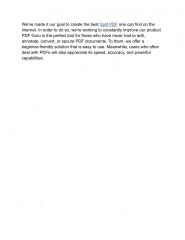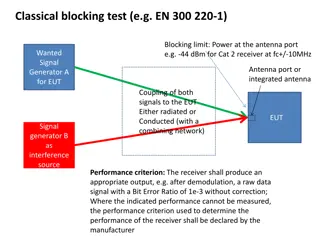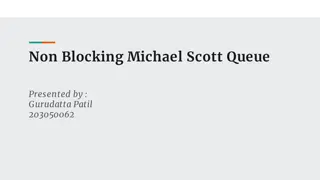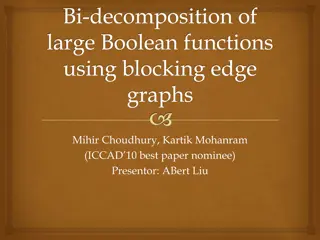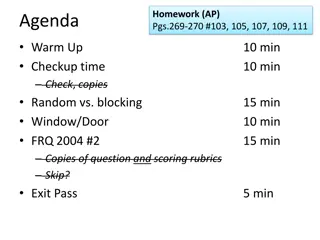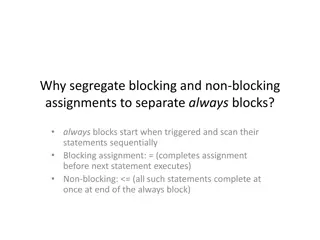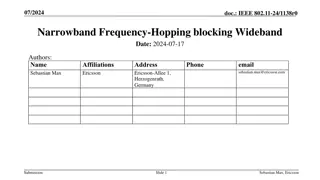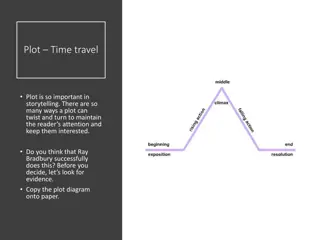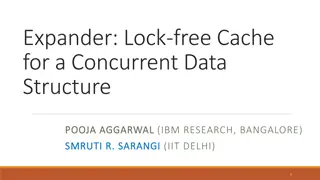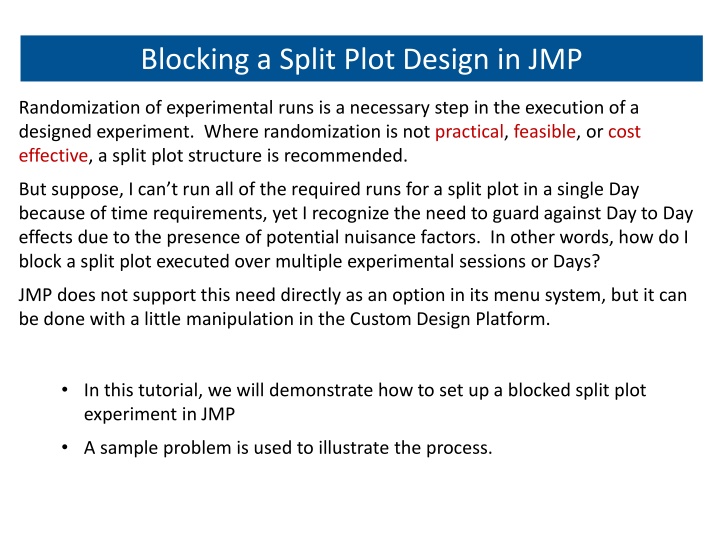
Implementing Blocked Split-Plot Experiment in JMP: A Tutorial
Learn how to set up a blocked split-plot experiment over multiple days in JMP to account for nuisance factors and day-to-day effects. This tutorial provides a step-by-step guide using a sample problem of researching the effects of additives and firing temperature on ceramic density.
Download Presentation

Please find below an Image/Link to download the presentation.
The content on the website is provided AS IS for your information and personal use only. It may not be sold, licensed, or shared on other websites without obtaining consent from the author. If you encounter any issues during the download, it is possible that the publisher has removed the file from their server.
You are allowed to download the files provided on this website for personal or commercial use, subject to the condition that they are used lawfully. All files are the property of their respective owners.
The content on the website is provided AS IS for your information and personal use only. It may not be sold, licensed, or shared on other websites without obtaining consent from the author.
E N D
Presentation Transcript
Blocking a Split Plot Design in JMP Randomization of experimental runs is a necessary step in the execution of a designed experiment. Where randomization is not practical, feasible, or cost effective, a split plot structure is recommended. But suppose, I can t run all of the required runs for a split plot in a single Day because of time requirements, yet I recognize the need to guard against Day to Day effects due to the presence of potential nuisance factors. In other words, how do I block a split plot executed over multiple experimental sessions or Days? JMP does not support this need directly as an option in its menu system, but it can be done with a little manipulation in the Custom Design Platform. In this tutorial, we will demonstrate how to set up a blocked split plot experiment in JMP A sample problem is used to illustrate the process.
Problem A scientist is researching the effects of a certain Additive and Firing Temperature on the resulting Density of a fired ceramic. Our scientist desires to maximize the resulting density. Factors, data type, experimental levels, and their ease of change are; Factor Data Type Low Level High Level Ease of Change Temperature Continuous 900 1100 Hard Additive Continuous 0 10 Easy Problem: only 6 experimental runs can be completed in a single Day; the required furnace is only available for 4 Days. Solution: insert an additional factor, Day into the design and designate its Ease of Change as a Very Hard. Added Factor Data Type Levels Ease of Change Day Nominal 1 2 3 4 Very Hard *Ease of Change refers to the difficulty of moving a factor from one level to another
Creating the Design In JMP: DOE >> Custom Design 1. Populate the Response Density designating its Goal as Maximize 2. Add two continuous Factors Temperature and Additive. a. For Temperature, designate its Ease of Change as Hard. Enter its Low Level as 900 and its High Level as 1100. b. For Additive, designate its Ease of Change as Easy. Enter its Low Level as 0 and its High Level as 10. 3. Do not add Day as a Blocking factor in JMP. Instead, add the Categorical Factor Day with 4 Levels. Edit the levels from 1 to 4. Designate Changes as VeryHard.
Creating the Design 4. The model will, by default, include each of the main effects, Temperature, Additive, and Day. Add the two factor interactions to the model. 5. 6. Remove each of the following terms from the model: Temperature*Day, and Additive*Day from the model. Interactions of the Blocking Factor Day are non- estimable. Remove Day from the model but retain it as a factor. JMP will treat it as a Random Block estimating its variance component via REML. 7.
Creating the Design 8. The Factors and Model Sections now look like:
Creating the Design 9. We have 4 days to run our experiment. Day is the Whole Plot factor that we assigned as Very Hard to Change. Assign the Number of Whole Plots to 4 in the Design Generation menu. 10. Temperature, designated as Hard to Change, is our Subplot factor and reflects the number of switches of Temperature we are willing to make in our experiment for this Hard to Change factor. Assign the Number of Subplots to 8 in the Design Generation menu. 11. Note that the default number of runs is 24. It is preferred that the number of Subplots be a multiple of the number of Whole Plots and that the number of runs be a multiple of both the Subplots and Whole Plots. 12. Create the Design
Creating the Design 9. We have 4 days to run our experiment. Day is the Whole Plot factor that we assigned as Very Hard to Change. Assign the Number of Whole Plots to 4 in the Design Generation menu. 10. Temperature, designated as Hard to Change, is our Subplot factor and reflects the number of switches of Temperature we are willing to make in our experiment for this Hard to Change factor. Assign the Number of Subplots to 8 in the Design Generation menu. 11. Note that the default number of runs is 24. It is preferred that the number of Subplots be a multiple of the number of Whole Plots and that the number of runs be a multiple of both the Subplots and Whole Plots. 12. Create the Design
Creating the Design 13. Delete the column Day from the data table. 14. Rename the Whole Plot column as Day, the Blocking factor. 15. Rename the Subplots column as the Whole Plot factor.
Creating the Design 16. The completed data table for the design looks like this.
Run the Experiment 17. Run the experiment. The resulting Densities for each experimental run has been appended to the data table.
Design Analysis The analysis suggests that all of the experimental factors are drivers of observed Density with Additive the largest driver. The Blocking factor, Day occupies almost 46% of the total variation; The Whole Plot factor Temperature nearly 50%.


